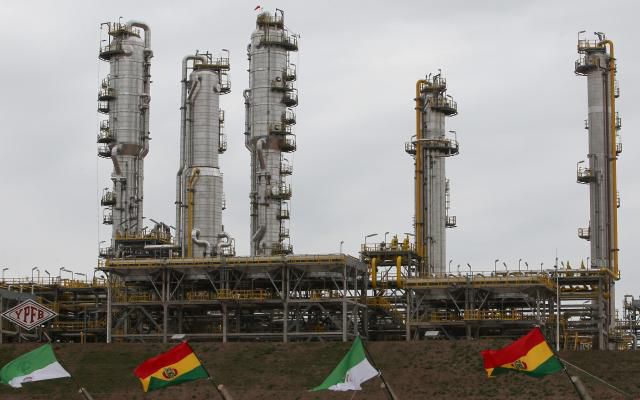He hydrocarbon sector Bolivia is going through one of the most difficult stages with the decline in natural gas production and without an updated certification of its reserves, which for some experts would imply that in a short time the country will stop exporting this resource and will have to buy it to supply his own demand.
The gas production went from 49.9 trillion cubic meters per day (mm3d) in 2014 to 40 mm3d in 2022, while hydrocarbon exports In the same period they went from 6,624 million dollars to 3,050 million, according to official data.
This reduction displaced the hydrocarbon sector from being the first category of exports to the third, below mining and non-traditional products.
In that sense, the Bolivian president, Luis Arce, warned last year that the gas reserves “They have been falling until they hit rock bottom“, although he did not give figures on the situation of the deposits of the hydrocarbon.
In August 2018, the Canadian firm Sproule International Limited made the latest report on Bolivian reserves, which reached 10.7 trillion cubic feet (TCF) of proven reserves of natural gas with a duration of 14.7 years, however, official reports establish that that year they reached 8.95 TCF.
In March 2023, the Government hired the American company Ryder Scott Company LP for a new certification of reserves, the results of which are not known so far despite the fact that the president of the state company, Yacimientos Petrolófilos Fiscales Bolivianos (YPFB), Armin Dorgathen , said they would be published last September.
Critical situation
The expert in hydrocarbonsHugo del Granado, told EFE that Bolivia is going through a “critical situation” since 2006 and that, if the downward trend in reserves continues, in 2029 the country “would find it necessary to start import gas”.
The expert explained that since 2018, the country has come to consume “about one TCF per year” and that if the 2018 certification is taken as a reference, “reserves to date could be below 4 TCF”.
For his part, the former Minister of Hydrocarbons Mauricio Medinaceli pointed out in statements to EFE that, if the existing data is taken, the country in 2030 or 2031 “I wouldn’t have gas” to export or to cover its internal demand.
“There is gas (…) but there is no institutional capacity in the country to take that gas to external markets, including the internal market.”he added.
For some years now, the Government has been applying the ‘Upstream Reactivation Plan (exploration and production)’, which includes 42 exploratory projects in various regions to increase hydrocarbon production and which could yield positive results starting next year.
Added to this are the projects to build two biodiesel plants in the east and west of the country and another HVO (hydrogenated vegetable oil) plant, which, according to the official projection, will serve to replace 59% of imports. of liquid fuels and reduce the subsidy that this year will reach US$ 1.4 billion.
Medinaceli considered that the rebound in hydrocarbon sector in Bolivia It is possible, butnot in the short term”, since this could take up to 10 years if the exploration time and ‘declaration of commerciality’ of the new deposits are taken into account.
While Del Granado assured that gradually Bolivia “It is no longer an exporting country of significant size and with decreasing production” with a certain international presence, but “without any significance in the market”.
Source: Gestion
Ricardo is a renowned author and journalist, known for his exceptional writing on top-news stories. He currently works as a writer at the 247 News Agency, where he is known for his ability to deliver breaking news and insightful analysis on the most pressing issues of the day.












